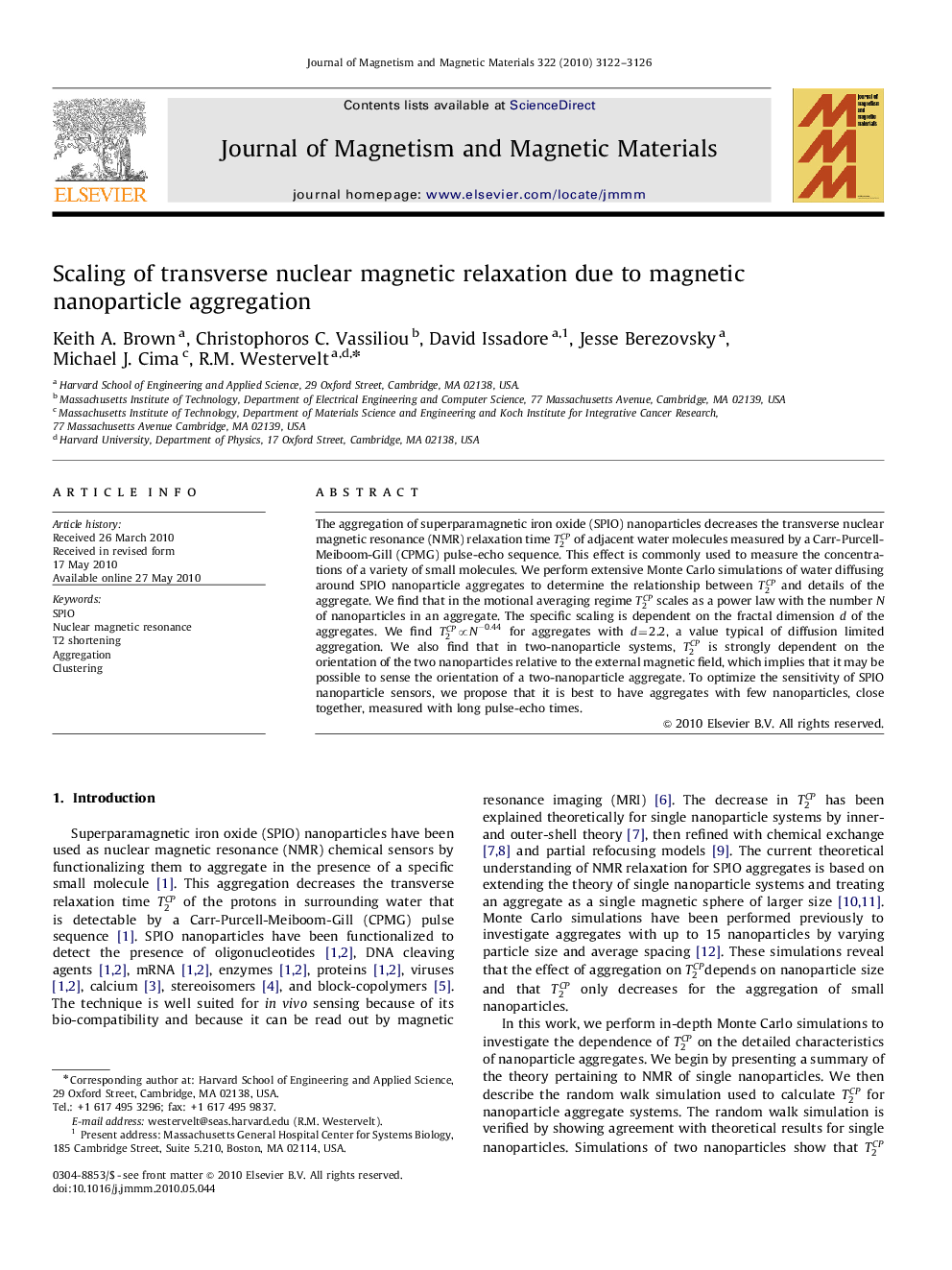| Article ID | Journal | Published Year | Pages | File Type |
|---|---|---|---|---|
| 1800641 | Journal of Magnetism and Magnetic Materials | 2010 | 5 Pages |
The aggregation of superparamagnetic iron oxide (SPIO) nanoparticles decreases the transverse nuclear magnetic resonance (NMR) relaxation time T2CP of adjacent water molecules measured by a Carr-Purcell-Meiboom-Gill (CPMG) pulse-echo sequence. This effect is commonly used to measure the concentrations of a variety of small molecules. We perform extensive Monte Carlo simulations of water diffusing around SPIO nanoparticle aggregates to determine the relationship between T2CP and details of the aggregate. We find that in the motional averaging regime T2CP scales as a power law with the number N of nanoparticles in an aggregate. The specific scaling is dependent on the fractal dimension d of the aggregates. We find T2CP∝Ν−0.44 for aggregates with d= 2.2, a value typical of diffusion limited aggregation. We also find that in two-nanoparticle systems, T2CP is strongly dependent on the orientation of the two nanoparticles relative to the external magnetic field, which implies that it may be possible to sense the orientation of a two-nanoparticle aggregate. To optimize the sensitivity of SPIO nanoparticle sensors, we propose that it is best to have aggregates with few nanoparticles, close together, measured with long pulse-echo times.
